Where Neuroscience Meets Navigation
Whenever I head out for a solo hike which happens to be the bulk of my forays into the mountains, I every so often have a niggling worry that I’ll utterly lose my way. Though statistically it’s a slight possibility it makes me attentive of my surroundings as soon as I hit the trail. A cursory glance of the National Police Agency (NPA) data for 2018 makes for some sobering reminders. Out of the 3,129 people who got into trouble in Japan’s abundant mountainous areas in 2018, just under 10 percent or 298 died and 44 went missing. This latter figure has barely wavered over the past 10 years, comprising on average 1.5 percent of all mountain distress cases in Japan. If tallied for the last 10 years, it comes out to a staggering 388 individuals that effectively disappeared without trace.
Given the sheer number of hikers who find themselves lost in the mountains means only the most noteworthy garner much attention such as large parties of climbers or where children are concerned. Last summer 1,700 police, firefighters, and Self-Defense Force personnel searched in vain for 7-year-old Misaki Ogura who went missing from a mountain-side campsite in Yamanashi Prefecture. This happenstance is thankfully quite rare as statistics show that 96 percent of children are found alive compared with only 73 percent of missing adults. In 2018 a tragic set of events lead to the deaths of 37-year-old Koya Shibuya and his 6-year-old son Sora after they lost their way in mountains in Niigata and succumbed to the cold.
At trailheads it’s not uncommon to find missing person flyers stuck to information boards, usually they are unaccompanied males, now and again younger folk but most appear to be senior hikers. This is consistent with the NPA figures which show that the overwhelming majority some 95 percent of those that died and remain missing in 2018 were 40 years or older, reflecting an increase in the number of hikers of advanced age.
So why do some people become lost, and what happens to them when they do? These two questions are given significant attention in Michael Bond’s meticulously researched and thought-provoking new book: *From Here to There: The Art and Science of Finding and Losing Our Way. While there are plenty of instructional books that detail how to navigate our surroundings, accounts delving into the evolutionary constructs of why modern humans make mental maps and how over millennia we have been able to hone them to find our way over large distances are far fewer.
Being lost as the book describes it, is a cognitive state where your internal map detaches from the external world with the upshot being you can no longer reconcile the world around you. The experience not only makes you fearful, but you lose your ability to reason. At this point most people don’t help themselves by running and acting out erratically. Instead of recalling landmarks they forget them, lose track of how far and long they have been moving and, in many cases, find themselves in the vicinity of where they began. The tendency to circle back to where you started when lost is frighteningly real.
It appears this heightened state of anxiety is deeply wired into us, and perhaps even unavoidable. To hammer it home Bond introduces Robert Koester, a search and rescue specialist who describes it as a “full-flown fight-or-flight catecholamine (dopamine / norepinephrine) dump” akin to panic attack where you feel like you’re separating from reality. On occasions lost people have been known to walk straight past search parties completely oblivious to what was going on around them. Solo male hikers will run themselves into the ground rather than stay put until someone finds them. Evidently the old adage – being lost doesn’t kill you, bad decisions do – rings true when disorientation is coupled with a deterioration of mental functioning in the wilds.
The opening chapter lays the foundations of wayfinding or navigating from place to place and recounts the diverse routes taken by Homo sapiens as they made their way out of Africa. Neanderthals may have migrated to Eurasia long before early sapiens but lacked social networks – key to the expansion of modern humans. Beneficial was our ability to form cognitive maps, recall the location of fertile hunting grounds and where to find water essential for survival. Mental maps also helped early humans safely navigate their way back and avoid ignominious failure. One such example is how Australian aborigines would venture a little in different directions to get a feel for the land then travel far without losing their way.
“To know the world is to feel comfortable in it” bespeaks the need for children to freely explore the environment around them. Young children nowadays are far more likely to be mollycoddled than their parents’ generation depriving them the chance to investigate their surroundings and thus build cognitive maps. Growing up in the 80s in suburban Melbourne, Australia I was lucky enough to be afforded the chance to walk to school alone from a young age, ride my bike to the local paddock and play in the park after dinner. Though more constrained than my father’s generation whose “home range” was an order of magnitude vaster. These early childhood experiences according to Bond teach us an awareness of the space in which we inhabit, fostering skills that are used by most “competent adult navigators”.
Following this the book takes an exploratory look at cognitive parts the brain involved in spatial awareness, essential for escaping the dizzying maze of showrooms at Ikea, navigating Shinjuku Station or hiking through Aokigahara (Jukai) forest. Embedded in the hippocampus deep in the temporal lobe of each cerebral cortex and the entorhinal cortex alongside it contains neurons known as place cells, boundary cells, speed cells, head-direction cells, and grid cells. Together they coordinate spatial navigation and underlie our sense of direction. Speed cells as you probably gather respond to running speed, head-direction cells form sort of an internal compass, boundary cells come into play at specific distances from walls of an environment while place cells fire when we occupy a specific location. It was only in 2005 that May-Britt Moser a Norwegian neuroscientist along with her husband discovered grid cells and the role they play in generating a coordinate system for precise positioning and pathfinding.
Chapter eight recounts the story of Geraldine “Gerry” Largay who after taking eighty paces from the Appalachian Trail for an impromptu bathroom visit sealed her cataclysmic fate. Her miss steps activated one of the biggest search and rescue operations in Maine, north-eastern United States. The area she lost her way was densely forested and as Bond later found while visiting her last known whereabouts, straying even fleetingly from the path looks the same in every direction. It was more than two years before her campsite and body was discovered just half a mile from the trail. There is much to be learned from this tragedy starting with always looking back to check the lie of the land before wandering too far off course.
For hikers and adventurers there are three key takeaways. The first is not to get in a panic. Once you become mindful that you have left the trail, stop, try and work out where you may have gone wrong and retrace your steps before you set in motion a chain of events that could have dire consequences. As Bond puts it “navigation can feel simple until it goes wrong” not paying attention at a crucial point, being distracted by others, or having a strong preconception that proves to be wrong are things that can cause you to go seriously awry. Second is ignoring your compass reading and probable location and on a whim change direction where you’ll almost certainly come unstuck. In these instances, a search party will have absolutely no idea where to start looking. And finally, whether hiking or in everyday life using a spatial approach to build cognitive maps of your surroundings (preferably without GPS!) strengthens your hippocampi helping maintain a healthy brain and potentially ward off neurodegenerative disorders such as Alzheimer’s disease.
A thoroughly engaging book, essential reading for anyone who regularly spends time outdoors or wishes to better understand how our brains make sense of the spatial cues in the diverse environments which we pass through.
*In the UK the book is published as Wayfinding: The Art and Science of How We Find and Lose Our Way (Picador, March 2020).
From Here to There: The Art and Science of Finding and Losing Our Way
by Michael Bond
304 pages. Belknap Press: An Imprint of Harvard University Press. ¥3,167.
Publication date: May 12, 2020
Available for purchase here.
Audiobook – unabridged: Free with Audible trial.
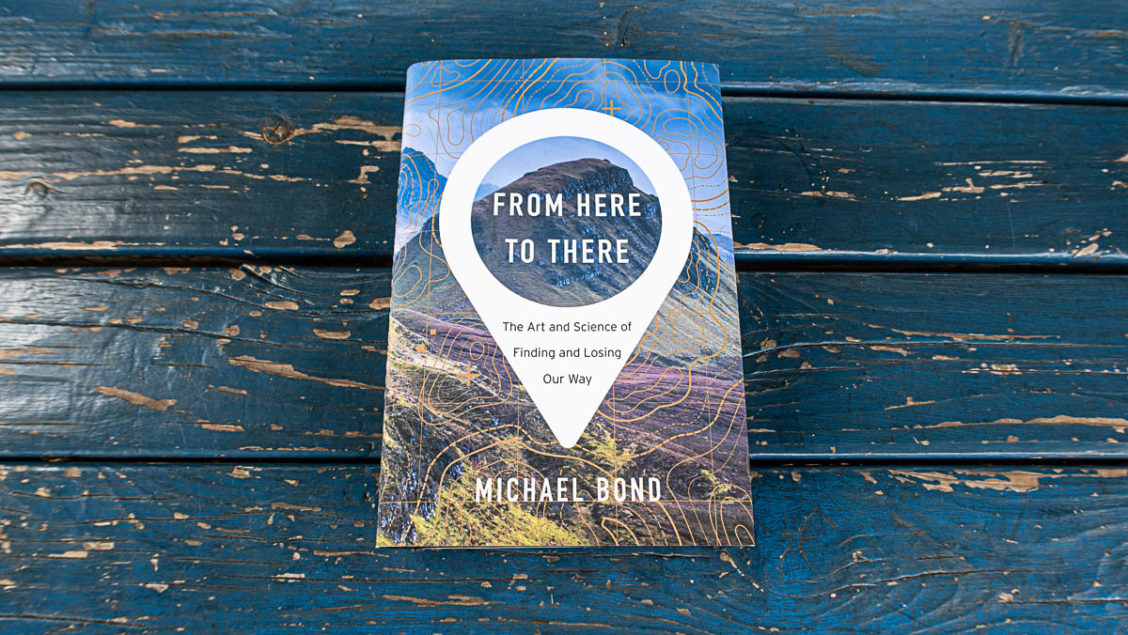

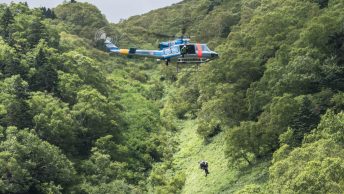
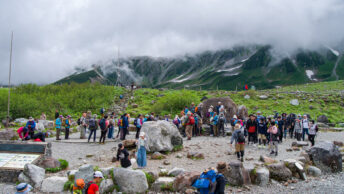
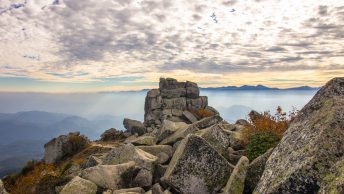

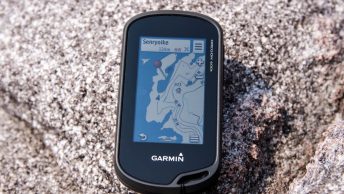
Hi David, Good article. As you mention, knowing how to use and navigate with an old fashion Couture Map and compass is an important skill that should be in the skill quiver of every outdoors person (hunters, fishermen, Hikers/backpackers); all of them. Today, the GPS has helped countless people enjoy the outdoors more than before but….. when the batteries die… what then?? I have seen this same problem occur often these days in the US Military. When the GPS stops working…. soldiers (without keeping their Navigation skills sharp) often make serious errors.
Good points Carl, while it’s sensible to carry a GPS device with you, strong map and compass skills are also essential. Being electronic they tend to fail at the most inopportune times and if you don’t have a map you may find yourself in a pickle so to speak. The book also goes to some length to emphasise the cognitive benefits from making mental maps for example practised navigators have an enlarged hippocampus which seems to have a protective effect against dementia.
Thanks for this timely and potentially life-saving review: full of interesting thoughts. “Navigation can feel simple until it goes wrong”. Yes, indeed. The Idea of building cognitive maps brings to mind a chapter in “Arctic Dreams” by Barry Lopez, in which he describes the astonishingly accurate mental mapsthat Inuit were traditionally able to summon up to navigate across apparently featureless terrain. Of course, the challenges for foreigners navigating in the Japanese mountains are somewhat different – perhaps you could follow up this review with some hints of your own about dealing with these special complexities?
Thanks for reading and taking the time to comment PH. Arctic dreams sounds like a terrific read. This book similarly describes how the Inuit used descriptive and precise place names to aid in navigation amid the flat and instinctive terrain. Indeed, the micro texture of the Japanese mountains presents its own set of challenges making wayfinding tricky such as sudden changes in weather that hampers visibility. Will give some thought to putting together some tips and forewarnings about remaining observant while out on the trail here.
Great book review David.
Hi David.
I’m buying it for Peter for his birthday later this month,
so very timely. He will be delighted to read it.
Hope all is going well.
Love your work!
Many thanks Brenda. Perfect choice for a birthday present and I’m sure Peter will also find it an enjoyable and interesting read. I think there is quite a lot that can be applied in our day-to-day lives.
The girl went missing pretty near one of my secret backcountry camps along the river. Sad. I keep waiting for an update. Hopefully it’s never forgotten or given up on. Glad you mentioned it. Keep it alive. I’ll check out the book. Thanks for the recommend. Rockie
It’s a very sad story particularly as there hasn’t been closure for the family. The case appears far from forgotten as late last month Yamanashi prefectural police along with Misaki’s mother did another two-day search for her.
It’s gut wrenching to read of children lost like that. I can only imagine what hell the parents must go through. For me, like with road and pool safety, it just emphasizes the need to keep young kids under constant supervision, even in their own territory. How many parents have we heard say “I turned my back for a few seconds and then he/she was gone”.
The Largay case haunts me. I found this site while researching it. Although Gerry was totally unsuited to be hiking alone, the blundering management of the Maine Warden Service’s SAR effort deserves a full inquiry, even all these years afterwards, because there are many lessons to be learned from that case.
@David: When you say “after taking eighty paces from the Appalachian Trail for an impromptu bathroom visit” … where does the 80 paces distance come from? I have trawled numerous reports on this case but never read that important detail before.
The account as presented by the author “They learnt that she had left the trail during the morning of July 22 a few miles from the Poplar Ridge shelter to go to the bathroom and couldn’t find her way back. Most likely she went no more than 80 paces into the woods—this was her usual practice. Disorientated in the tangle of trees and brush, she started wandering.” He wrote a rather long excerpt for Wired magazine which is where I first learnt about the book. https://www.wired.com/story/why-humans-totally-freak-out-when-they-get-lost/
OK, so he’s surmising that she went 80 paces in based on what he’s been told was her usual practice.
As you may know, her body was located about 900 metres from the trail, well within an expected search boundary for those who wander off trails and get turned around. She had wandered into ‘classified’ US Navy training territory and it seems that the SAR chief did not co-ordinate well enough with Navy to ensure that area was thoroughly searched, and searched early in the operation.
There are many lessons to be learned from the tragic Largay case, both on the part of hikers and of SAR co-coordinators.
Yes, I had read Michael Bond’s article about the behavior of lost people. Professor Kenneth Hill’s articles can be found here: https://www.researchgate.net/profile/Kenneth_Hill7
Thanks for the book review. I will buy that book.